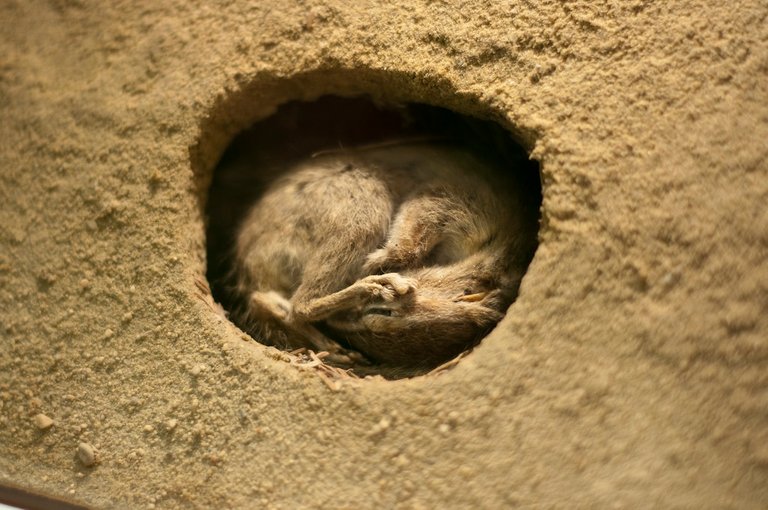Ground-breaking Approach to Induce a Hibernation-Like State with Ultrasound.

The ability of ultrasonic stimulation to cause a condition similar to hibernation in living beings has recently seen major advancements in scientific understanding and application. This amazing finding has created new opportunities for medical research and could transform a number of industries, including space exploration, healthcare, and even the treatment of life-threatening illnesses. We shall examine the techniques, significant findings, and prospective applications of this ground-breaking work in detail in this article.
Understanding the Research
The Concept of Hibernation
Hibernation, a state of deep sleep observed in certain animals, has long fascinated scientists. It is characterized by a significant reduction in metabolic activity, body temperature, and overall energy expenditure. Animals that undergo hibernation are capable of surviving extended periods with limited resources, making it a compelling area of research.
A group of committed researchers set out on a mission to examine the feasibility of establishing a comparable state in mammals via ultrasound stimulation, building on the body of knowledge regarding hibernation. Their studies concentrated on activating particular brain areas linked to metabolism and body temperature control.
How was it done?
A finding in the ground-breaking ultrasound investigation carried out by bioengineer Hong Chen and her team at Washington University in St. Louis was that no genetic editing was necessary. According to earlier studies, some neurons have specific pores called TRPM2 ion channels that alter shape in response to ultrasonic vibrations. Particularly, this fascinating feature was present in the fraction of POA cells (Pre optic area in hypothalamus that manage sleep and temperature) that regulate mouse torpor. Chen's team used tiny, speaker-like devices attached to the mice's skulls to enable them to concentrate the ultrasound waves exactly on the POA region in order to study the effects of this phenomena on the animals' behavior.
The targeted brain areas for metabolic control and thermoregulation received the ultrasonic stimulation with great attention. The scientists were able to manipulate neural activity and affect the animals' physiological reactions by using exact frequencies and intensities.
The animals' metabolic rates significantly decreased, and their body temperatures also decreased. The animals were able to retain energy and live for long periods of time without the need for outside food thanks to this metabolic inhibition. Additionally, throughout this artificially produced state of hibernation, the brain showed specific patterns that matched the natural cycles of hibernation.
Key Discoveries and Implications
The use of ultrasonic stimulation to induce a condition similar to hibernation has enormous potential in many areas:
Space Exploration: Inducing a hibernation-like condition in astronauts could dramatically cut resource consumption and lessen the physiological and psychological strains associated with protracted space travel. Long-duration space missions are planned for the future. Astronauts could be put into a dormant condition to conserve resources while traveling by slowing down metabolic processes and lowering their energy needs.
Applications in Medicine: In critical care situations, the capacity to generate controlled states of decreased metabolic activity may hold potential possibilities. For instance, it becomes easier to preserve organs for transplantation as their viability is increased by reducing their metabolic demands. Furthermore, by lowering the brain's need for oxygen and metabolic resources, triggering a hibernation-like condition may lessen the harm caused by strokes or heart attacks. This creates opportunities for better trauma case outcomes since decreasing metabolic demand can create a critical window for medical intervention.
Conservation initiatives: Inducing hibernation-like states in animals may help with conservation efforts, especially for threatened or endangered species that face difficulties because of habitat loss, a lack of resources, or severe climates. The metabolic demands of these creatures can be greatly decreased by inducing a regulated hibernation-like state, improving their chances of survival during times of environmental stress or scarcity.
Future Challenges
Although the preliminary results of this study are extremely encouraging, there are still a number of obstacles to overcome before these findings can be put to use practically:
Safety: To ensure the safety and effectiveness of ultrasonic stimulation in generating hibernation-like states in people, extensive research and clinical trials are required. In order to minimize potential hazards and maximize results, thorough testing and precise refining are essential. In order to avoid negative consequences and guarantee the wellbeing of those undergoing such operations, careful observation and adjustment of the ultrasonography parameters are necessary.
Ethical Considerations: As with any new technology, it is important to carefully consider the moral ramifications of putting humans and animals into states similar to hibernation. It will be vital to strike a balance between scientific development and ethical usage of this technology. To direct the development and use of this ground-breaking research, strong ethical frameworks should be constructed. These frameworks should include informed consent and continuing ethical oversight.
Technical improvements: To improve the efficiency and dependability of producing hibernation-like states, more developments in ultrasonic technology, including improved targeting precision, wave modification techniques, and the minimizing of side effects, are required. To improve the ultrasound stimulation protocols and streamline the induction procedure, more investigation and innovation in this field is required.
Final words
A significant advance in scientific understanding can be seen in the use of ultrasonic stimulation to induce a state similar to hibernation. This finding has the potential to change many industries and improve the welfare of both people and animals. Its potential uses range from space exploration to medical treatments and conservation initiatives. The future seems bright for this fascinating area of scientific inquiry as continuing investigations continue to reveal new insights and overcome obstacles.
References
You can read more about this here:
https://www.nature.com/articles/s42255-023-00804-z
https://www.science.org/content/article/ultrasound-brain-pulses-put-mice-hibernation-state